The people at Tour Master know a good thing when they have it. And their Transition textile jackets have proven to be a very good thing, remaining a highly popular option in the company’s extensive lines of riding gear for more than a decade. Latest in the series is the Transition 3, marking the second time the jacket has been revised—or, more accurately, restyled—from the original.
Turns out that the first Transition was so functionally sound that Tour Master chose not to change the concept or the materials. Instead, only the styling and certain aspects of material placement were tweaked for the second version, and once again for the Transition 3.
As with its precursors, the 3/4-length T3 is composed of a 600 Denier Carbolex main outer shell with 1680 Denier ballistic polyester on shoulders, elbows, and forearms. CE-approved armor supplements crash protection in those same impact areas, while an articulated, triple-density protector does likewise at the back.
Integral to the seam-sealed shell is a waterproof, breathable Rainguard barrier that keeps the interior dry without perspiration buildup. Cold-weather warmth is provided by a zip-out quilted liner that uses 100g poly fill. Warm-weather ventilation is via zippered, waterproof vents on the shoulders, chest, sleeves, and across the back. Reflective Phoslite strips on back and chest, along with sleeve piping made with the same material, help the rider to be more visible at night. Plus, the jacket is available in six colors: Red/Black, Silver/Black, Black/Black, Wine/Black, Steel Blue/Black, and Hi Visibility Yellow/Black.
There are lots of pockets, including a vertical map pouch on the chest, a key compartment (with a key clip on a sewn-in lanyard) on the left sleeve, two phone pockets on the liner, two sizable pockets on the inside of the shell, and two large outer front pockets with flap closures. On the T3, the entirety of the front pockets is on the outside of the jacket, whereas on the first two Transitions, only the openings and flaps were on the outside; the pockets’ interiors were inside the outer shell. This change makes accessing items in the pockets a bit easier on the new jacket than it was on the first two versions.
After having ridden almost 2,500 miles in a new Transition, I have come away very impressed. I remained comfortable in temperatures as low as the high 40s on a naked bike when wearing only a long-sleeve cotton T-shirt beneath the jacket, and down into the high 30s on a couple of fully faired sport-tourers when similarly dressed. In hot weather, removing the liner and opening the multiple vents allowed enough air flow-through to keep me cool and sweat-free. And in more than a day and a half of riding in the rain, I stayed mostly dry.
I say “mostly” because during one particularly heavy downpour, my lower shirtsleeves got a little wet because my glove gauntlets were not quite long enough to keep the jacket sleeves from occasionally slipping out. I blame most of that, though, on my exceptionally long (37-inch sleeve length) arms. No orangutan jokes, please. Also, enough water once seeped up between the jacket’s bottom and the top of my riding pants to moisten my shirt; but that is not an uncommon occurrence when riding in hard rain in a two-piece suit, especially when the jackets are either waist- or three-quarter length.
The only problem I experienced was with one of the Velcro wrist closure straps, which have the “hook” half of Velcro’s hook-and-loop pair attached to the sewn-on rubber straps with some sort of adhesive. On just the third time I wore the jacket, the hook strip peeled away from the rubber strap on the right-hand sleeve when I tried to undo the closure. The only way I could then cinch the sleeve closed was to loop the hook strip over top of the rubber strap, which made for an awkward, bulky closure. When I reported the problem to Tour Master, I was sent a replacement jacket and asked to return the faulty one for inspection. So far, that problem has not occurred on the replacement.
Despite that incident, I found the Transition 3 to be a terrific jacket—quite comfortable, very adjustable (thanks to takeup straps on the forearm and bicep areas, adjustable waist belts, and a pair of reflective takeup flaps on the bottom edge of the jacket), and widely versatile through its ability to cope with a broad range of weather conditions.
This was not my first experience with the Transition concept. I have an original Transition that I’ve worn for many thousands of miles over the years, and this latest one offers small but noticeable improvements. The T3 has a more-effective ventilation system due to additional vents at the front, and, of course, it has the easier-access front pockets.
It’s no wonder, then, that Tour Master hasn’t attempted to “fix” the Transition. It ain’t broke.










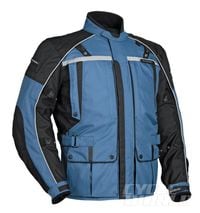
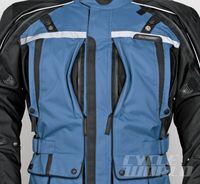
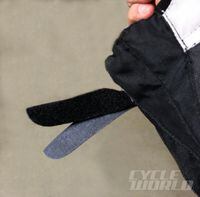
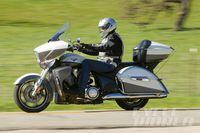
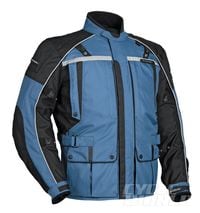
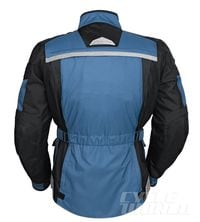
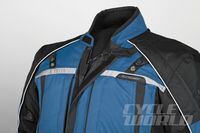
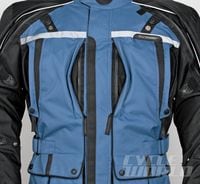
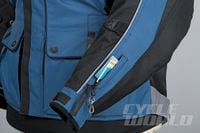
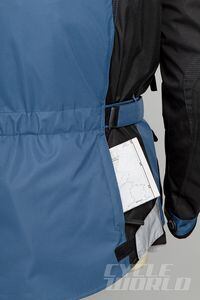
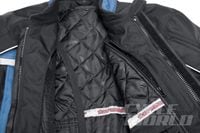
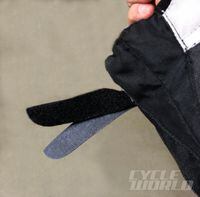
/cloudfront-us-east-1.images.arcpublishing.com/octane/RO36KTIVYZEATJW7CCB77EQHLQ.jpg)
/cloudfront-us-east-1.images.arcpublishing.com/octane/BUIUXSLF5RFRVJ3E26VRO5V2AY.jpg)
/cloudfront-us-east-1.images.arcpublishing.com/octane/EJJ2JBBSEZAWLFCRDALQOIBFVU.jpg)
/cloudfront-us-east-1.images.arcpublishing.com/octane/WVYKJFMINVFMFH37AE4OUEWVIM.jpg)

/cloudfront-us-east-1.images.arcpublishing.com/octane/JJ3MC6GNDFF5ZNYD3KD3E4EY7Y.jpg)
/cloudfront-us-east-1.images.arcpublishing.com/octane/XH2ETEU4NVGDFNQO2XT2QQS5LU.jpg)
/cloudfront-us-east-1.images.arcpublishing.com/octane/UFG652C27BDBFPK42TDAJ5CMX4.jpg)
/cloudfront-us-east-1.images.arcpublishing.com/octane/AUE3NFVRRZDSBIDVUGIYIDQNUI.jpg)
/cloudfront-us-east-1.images.arcpublishing.com/octane/LYR62CH2WNBMHJJVXVATZHOUE4.jpg)
/cloudfront-us-east-1.images.arcpublishing.com/octane/RBCTRGBQYBDK7A6XPG3HKPS7ZQ.jpg)
/cloudfront-us-east-1.images.arcpublishing.com/octane/MQXQRYMZVBCWJIRYP3HEN3SHVE.jpg)
/cloudfront-us-east-1.images.arcpublishing.com/octane/TSPODNNEWRDSVJGUCNQTDG4ADI.jpg)
/cloudfront-us-east-1.images.arcpublishing.com/octane/X5TB7BDV4BA2RPSY54ZGK27RP4.jpg)
/cloudfront-us-east-1.images.arcpublishing.com/octane/REUHOJXRDBGZ5IHBYZCCBCISPA.jpg)
/cloudfront-us-east-1.images.arcpublishing.com/octane/52LGJTCKBFEHDF7S7H4CVUIMGM.jpg)
/cloudfront-us-east-1.images.arcpublishing.com/octane/YMWAIPIPSJAOXOU3QMJMGH37OM.jpg)


/cloudfront-us-east-1.images.arcpublishing.com/octane/EJ6KZRGAYBCVXNL2PJXL37UVWQ.jpg)
/cloudfront-us-east-1.images.arcpublishing.com/octane/AAN4TI76M5H5JMUVEIGASWXBDU.jpg)
/cloudfront-us-east-1.images.arcpublishing.com/octane/P3RXD2UCPFF37CMB7CHPVKXORY.jpg)
/cloudfront-us-east-1.images.arcpublishing.com/octane/VZEG2EJI2RDFZNHLRZMU56MD3Q.jpg)
/cloudfront-us-east-1.images.arcpublishing.com/octane/GVJQO5FFOFBWNGODOBRB4FBAW4.jpg)